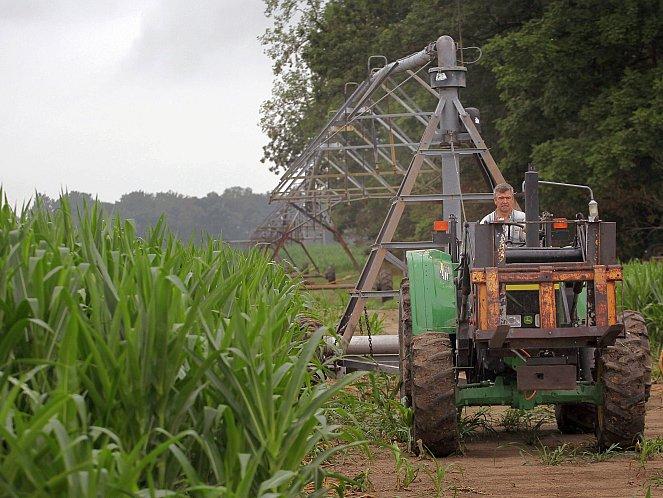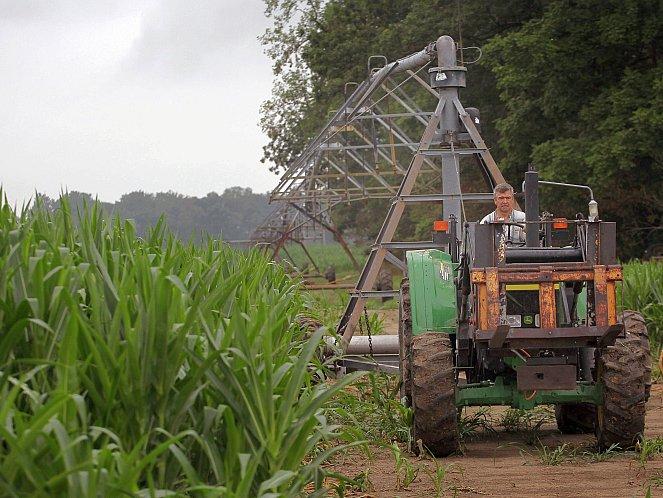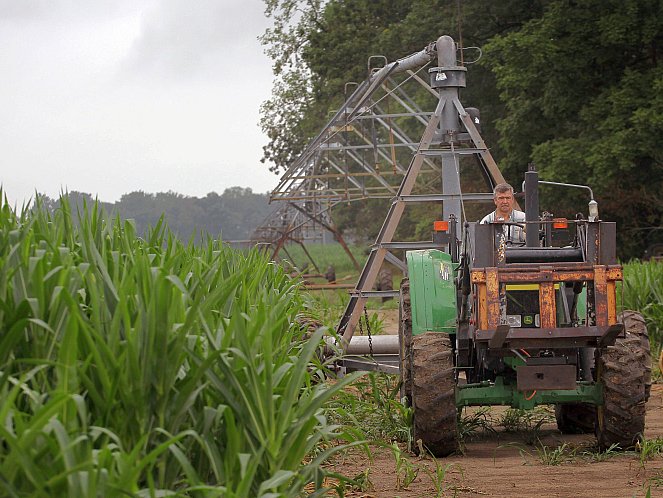Every five years, the agricultural farm bill, covering agriculture, conservation, and forestry policies, has to be reauthorized by the U.S. Senate and House after discussion by the U.S. Senate Committee on Agriculture, Nutrition, and Forestry. The last Agriculture Reform, Food and Jobs Act was approved in 2008, making 2012 the year of the act’s expiration and reauthorization.
In an effort to move the act forward, U.S. Rep. Collin Peterson, a ranking member of the House Committee on Agriculture, said in a July release, “The current farm bill expires on September 30 and there [are] only 13 legislative days before the August recess.”
The act includes a number of important changes that will benefit the agricultural industry and according to the U.S. Senate Summary, save taxpayers $23 billion. The reauthorization was passed by a bipartisan vote of 64–35 on the Senate floor at the end of June, but is still lingering in the House of Representatives.
“The Farm Bill is one example of several pieces of legislation important to American jobs that passed with strong bipartisan support in the Senate, only to languish in the U.S. House—including Postal Service reform legislation,” according to an August announcement on U.S. Sen. Claire McCaskill’s website.
The taxpayers’ future savings were achieved by eliminating a number of crop assistance programs that dated back to the Great Depression.
The 2012 act ends direct subsidy payments to farmers, replacing it with a subsidized crop insurance program, which will help farmers down on their luck.
Those in favor of reauthorization have pulled out the heavy guns. “In the United States, some 16 million jobs depend on the strength and continued success of American agriculture,” according to a 2012 summary published on the U.S. Senate Committee on Agriculture website.
Time is running out, given the expiration of the 2008 farm bill. House Republicans tried to push through a one-year extension of the farm bill, but yanked it before the House Rules Committee meeting because of opposition.
Americans for Prosperity (AFP), a grassroots activist organization, opposed the one-year extension, sending a letter to U.S. representatives on behalf of AFP’s more than 2.1 million members.
“The bill would extend myriad wasteful programs that have more to do with placating special interests than providing relief to drought-ridden farmers,” according to the July AFP letter.
Instead, the Agricultural Disaster Assistance Act of 2012, authorizing $383 million for one year in disaster relief, was passed in the House without any amendments on Aug. 2.
“This is not a long-term solution, but it takes care of the problem until we can get a five-year farm bill on the books and put those policies in place,” said U.S. Rep. Frank Lucas, chairman of the House Committee on Agriculture, in an Aug. 2 announcement.
According to the House Committee on Agriculture website, in his floor statement during the hearings of the Agricultural Disaster Assistance Act, Lucas said, “Now let me address the farm bill that my colleagues seem to either love or hate, or love to hate, or hate to love. The bill is not perfect, no legislation is.”
Welfare Program for the Rich
“Cronyism is the practice by which government officials provide preferential treatment (such as loans, subsidies or regulatory preferences) to handpicked firms or industries. It is a bipartisan practice. … There is no justification for extending our current regime of agricultural subsidies—a clear example of cronyism,” according to a June commentary on the Mercatus Center website. The Mercatus Center is a George Mason University research center.
Mercatus points out that the farm bill originally was enacted to help distressed farmers, but instead developed into a program for the wealthy. “The subsidies have become the poster child for government welfare for the affluent,” according to Mercatus.
The subsidy beneficiaries are business enterprises that have a connection to a political party. According to Mercatus research, the agriculture sector lobbyists handed politicians $124 million in 2011.
“This cronyism isn’t good for taxpayers. Nor is it good, in the long run, for the industry it supports. Congress must put an end to farm subsidies and all other preferential treatments that farmers have been receiving for years,” Mercatus advises.
Crop Insurance Boon to Foreign Insurance Companies
The much-heralded Agricultural Crop Insurance program has turned into a windfall for large farm insurance corporations.
ACE Ltd. of Switzerland, QBE Insurance Group of Australia, Endurance Specialty Holdings Ltd. of Bermuda, XL Group Ltd. of Ireland and Bermuda, Itochu Co. of Japan, Fairfax Financial Holdings Ltd. of Canada, and IAT Reinsurance Co., Ltd. of Bermuda are among 20 insurance companies that benefited from the U.S. crop insurance program from 2007 to 2011, according to a news release on the Environmental Working Group (EWG) website.
“The U.S. Department of Agriculture’s Risk Management Agency paid these companies for administrative and operating expenses for the federally subsidized crop insurance program. … The agency also reported $8.1 billion in underwriting gains during the same period but has not disclosed how much of the gains each company received,” according to the EWG release.
Additionally, taxpayers also pay a portion of the premiums farmers are charged for crop insurance coverage, which amounted to $7.4 billion in 2011. Wells Fargo ($1.72 billion), a U.S. lender, ACE Ltd. ($1.5 billion), and QBE Insurance Group ($1 billion) each received over $1 billion in subsidies from 2007 to 2011.
According to a March U.S. Government Accountability Office (GAO) report, one large corporate farmer insured crops in eight different counties, receiving $1.3 million in premium subsidies.
“If a limit of $40,000 [this is an example and not a recommended limit] had been applied to individual farmers’ crop insurance premium subsidies, as it is for other farm programs, the federal government would have saved up to $1 billion in crop insurance program costs in 2011,” according to the GAO analysis.
Brief Details About the Farm Bill
“The farm bill comes up for renewal every five years, and its specific provisions determine whether major farm programs administered by the U.S. Department of Agriculture (USDA) will continue,” according to a Mercatus Center article.
The USDA supports agricultural entities through a number of programs, including agricultural research, crop insurance, nutrition assistance programs, farm conservation, and rural development.
Mercatus provided a historical trend of government spending under the farm bill: “Spending (adjusted for inflation) on farm programs averaged roughly $28 billion per year for the 1996 farm bill and $27 billion per year for the 2002 farm bill. The five-year cost of farm programs in the 1996 farm bill was $141 billion, while the 2002 farm bill was $125 billion.”
The 2008 projected farm bill spending was $83 billion. Instead, taxpayers paid out $104 billion, $21 billion more than projected, during the past five years, according to information gleaned by Mercatus from the Congressional Research Service.
The majority of the agricultural funds (three-fourths of the subsidies) were handed over to 10 percent of America’s farms in 2010.
“Such sizable spending surely attracts attention: More available money creates more opportunities for special interest groups and lobbying. … With farm household incomes 25 percent higher than the average U.S. household income, farm subsidies amount to corporate welfare for the relatively well off,” according to Mercatus.
The Epoch Times publishes in 35 countries and in 19 languages. Subscribe to our e-newsletter.






